Virtuoso Certificate Authority Setup
The steps that follow guide you through the process of setting up your Virtuoso instance for issuing CA-Authority notarized X.509 certificates that include WebID? watermarks.
Prerequisites
The following packages should be installed:
Generating CA-Authority Certificate ( .p12 or .pfx )
Manually Generating CA-Authority Certificate
- Go to the
http://cname:port/conductorURL, enter the DBA user credentials. - Go to System Admin->Security
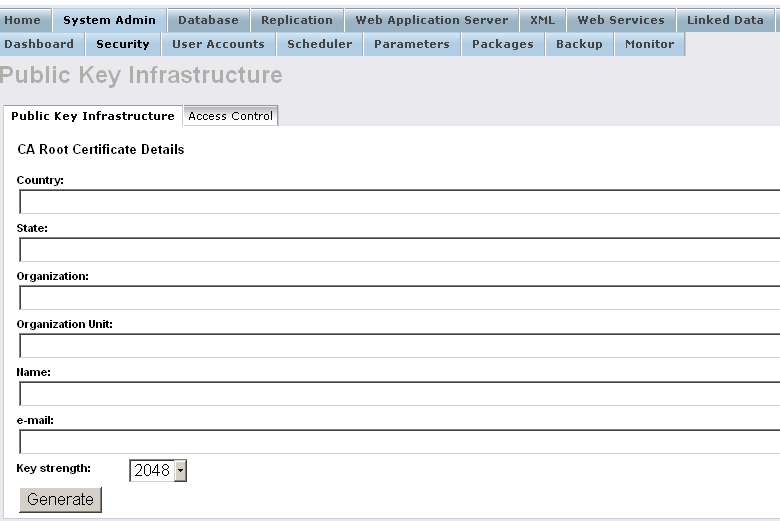
- Enter in the presented form for ex:
- "Country": US;
- "State": MA;
- "Organization": Example Inc. ;
- "Organization Unit": Example ;
- "Name": Root CA
- "e-mail": dba@example.com
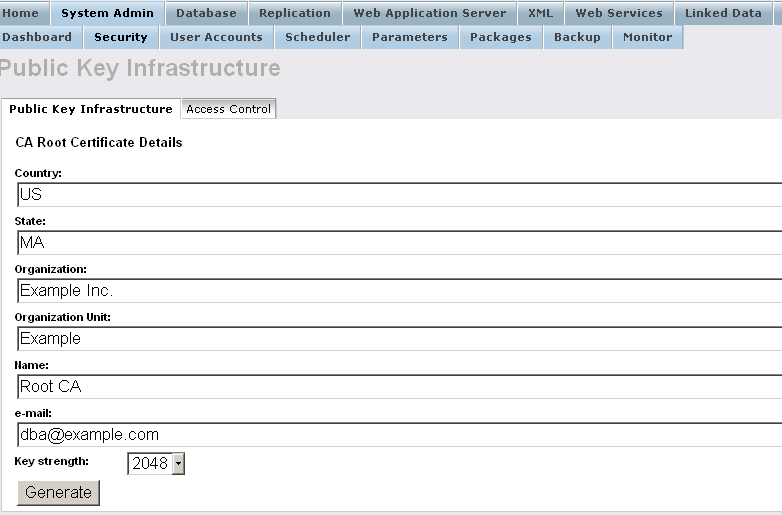
- Click "Generate".
- The CA-Authority Certificate should be successfully generated:
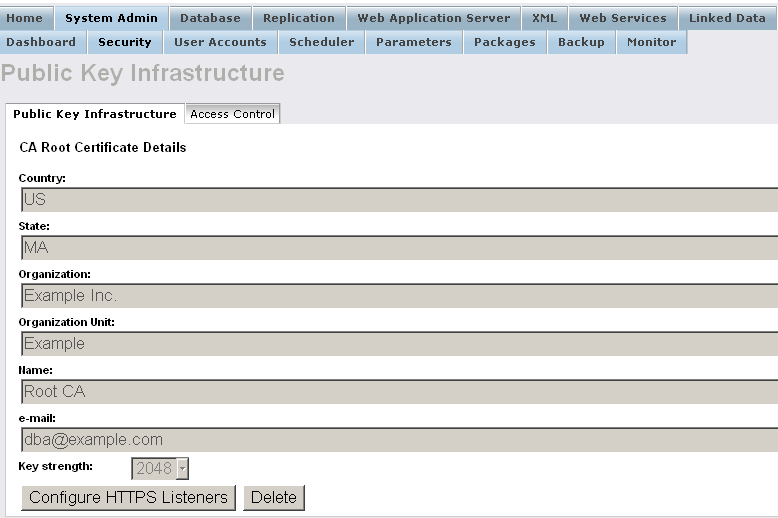
Importing CA-Authority Certificate
-
Generate CA-Authority Certificate that:
- has
http://localhost:8890/dataspace/person/dba#this> as WebID?. - is
Certification Authority (CA)Identity - has
Self-SignedIssuer
- has
- Go to the
http://cname:port/conductorURL, enter the "dba" user credentials. - Go to System Admin->User Accounts
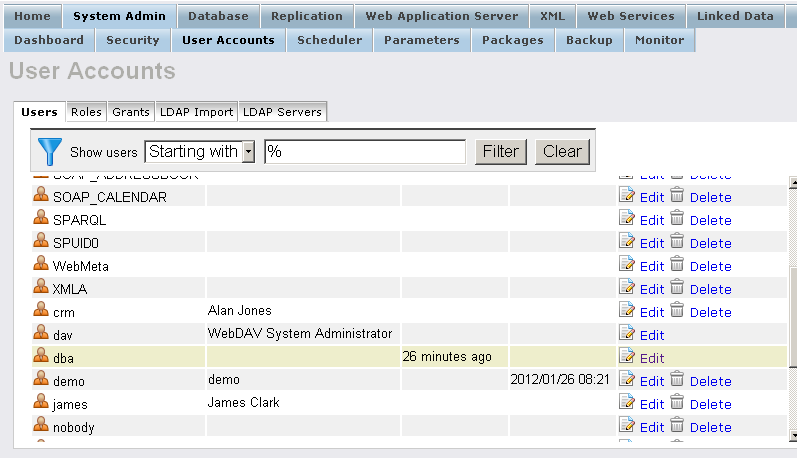
- For user "dba" click "Edit":
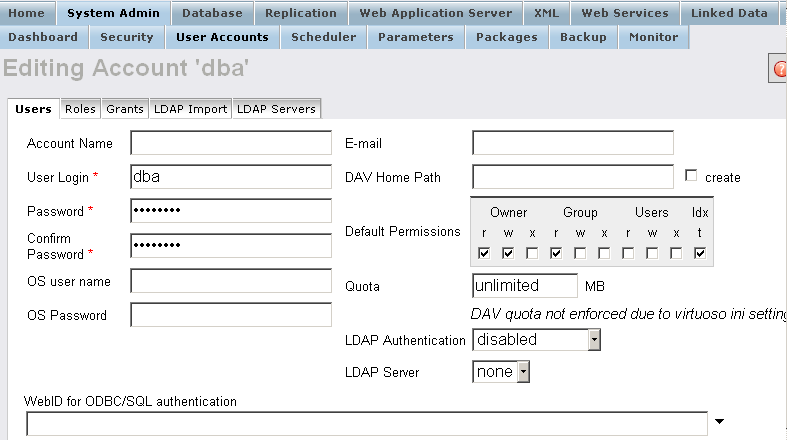
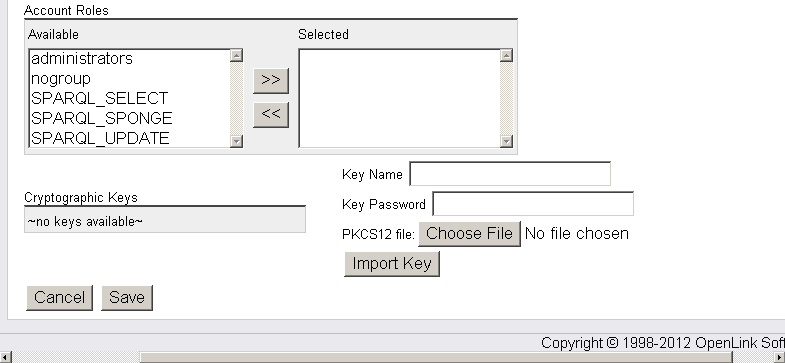
- In the presented form for "PKCS12 file:" click "Choose File" and select your CA Certificate, for ex.
with name "example.p12":
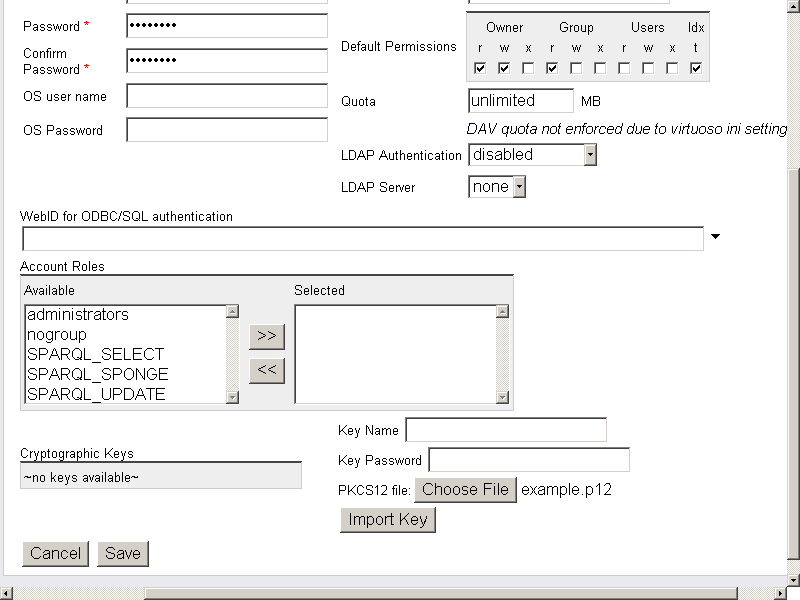
- Enter "Key Name": id_rsa and "Key Password": the password your CA Certificate has:
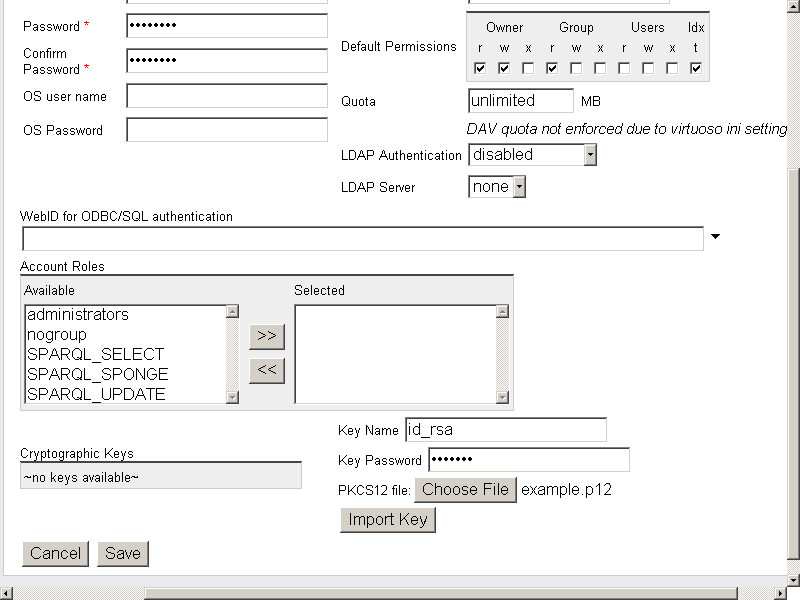
- Click "Import Key".
- On a successful import, the certificate should be presented in the "Cryptographic Keys" list:
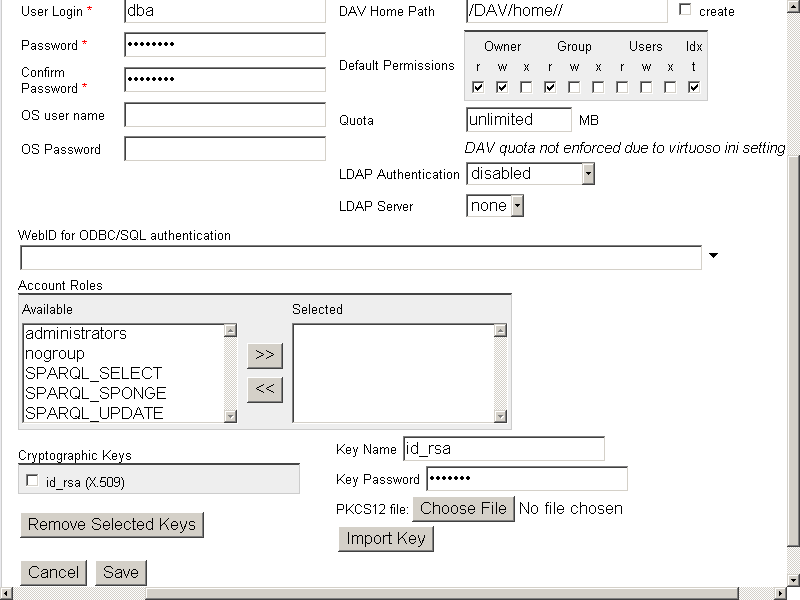
- Click "Save".
- Go to System Admin->Security->Public Key Infrastructure
- The CA Certificate Details should be presented:
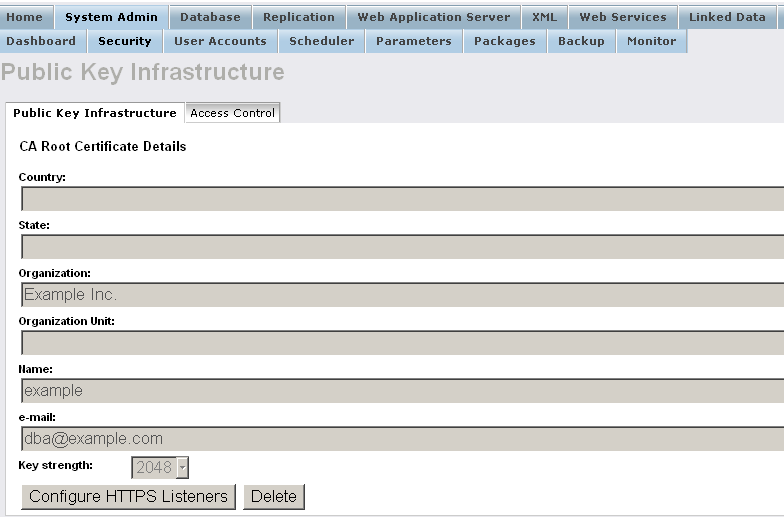
Generating SSL Key Using the Conductor UI
- Go to the
http://cname:port/conductorURL, enter the DBA user credentials.
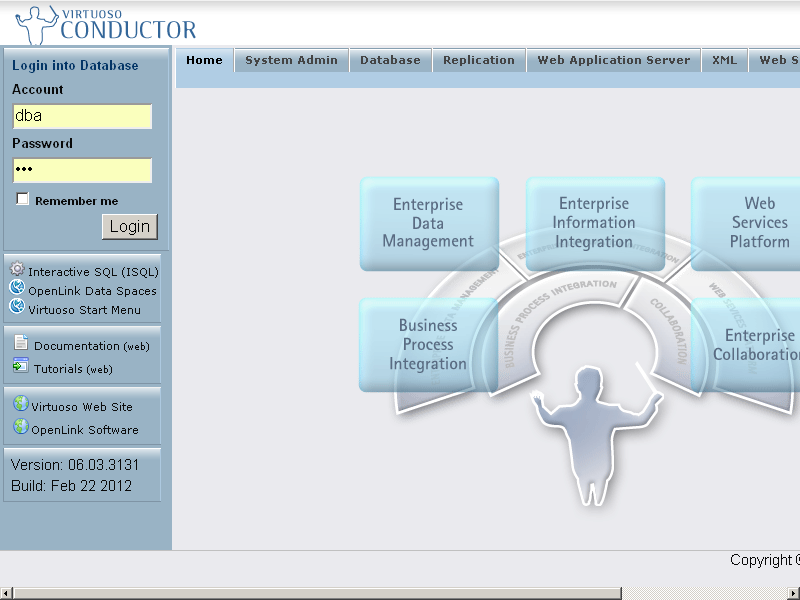
- Go to System Admin->Security
- Note: Suppose the CA-Authority Certificate is generated / imported already as per the previous sections from above.
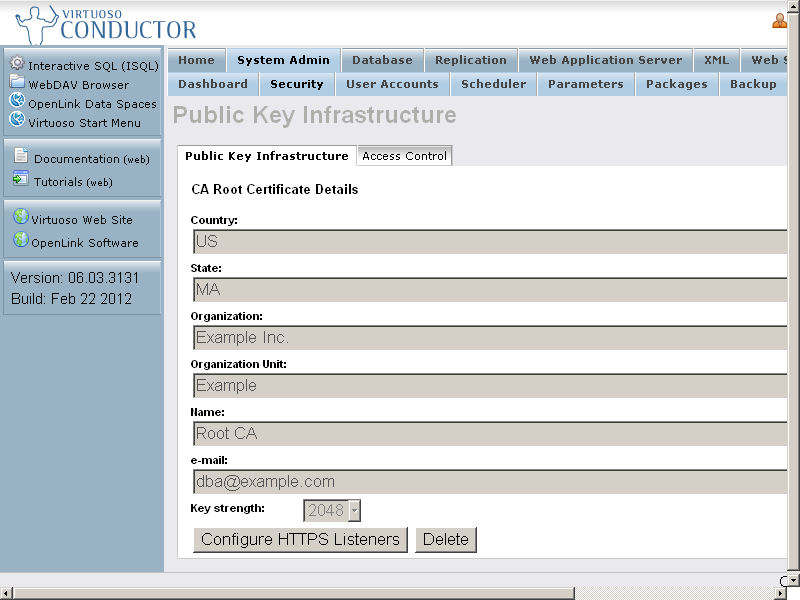
- Note: Suppose the CA-Authority Certificate is generated / imported already as per the previous sections from above.
- Click Configure HTTPS Listeners
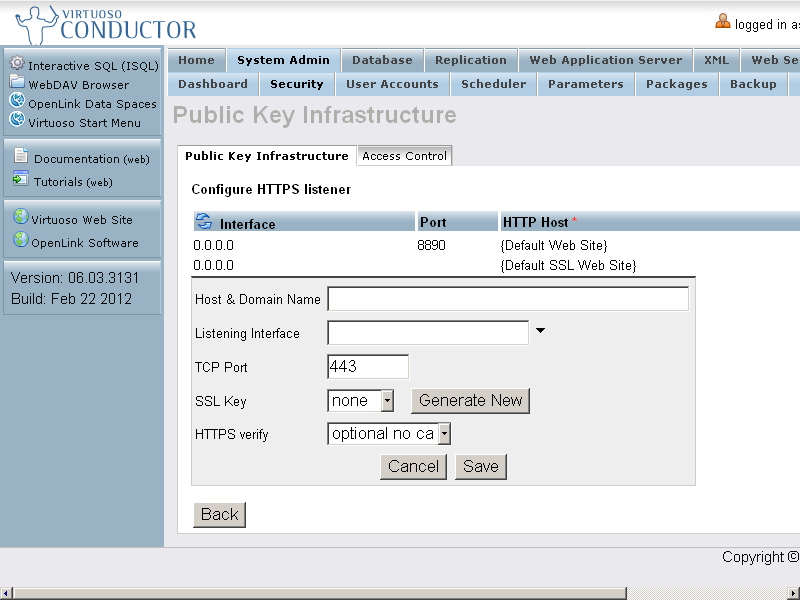
- Edit the new listener, and click "Generate New" key.
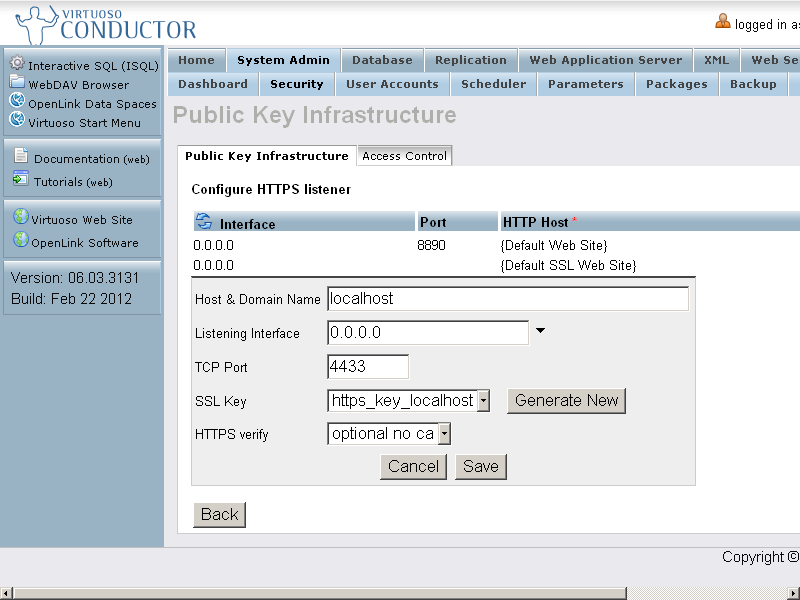
- Click Save
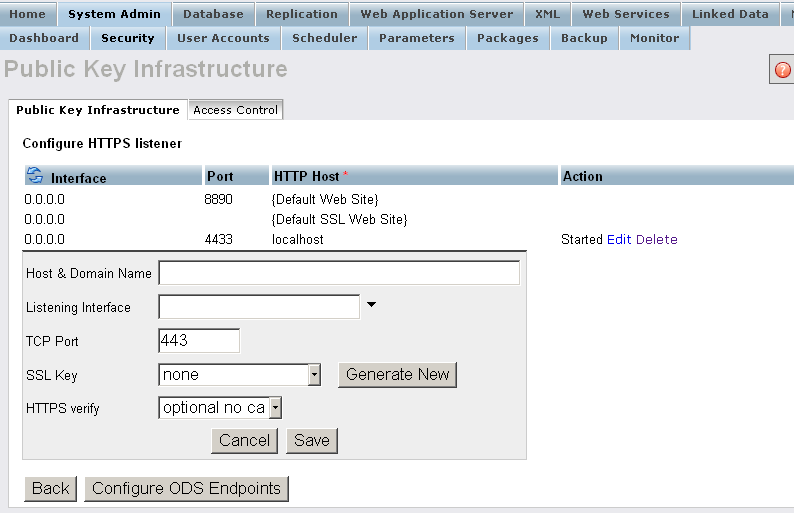
Setting Up Firefox
- In the Preferences dialog, open the Advanced tab, and click the "View certificates" button.
- Click the "Add exception" button and enter the address of the HTTPS server you've just configured, i.e., https://virtuoso.example.com:4433/
- Click OK, and confirm the exception.
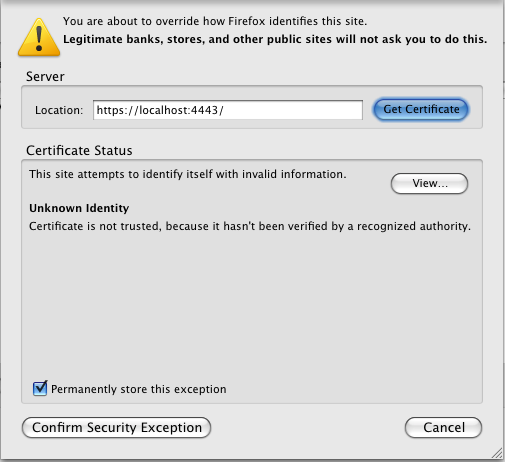
Related
- Safeguarding your Virtuoso-hosted SPARQL Endpoint
- SPARQL Endpoint Protection Methods Collection
- Virtuoso documentation
- Virtuoso Tips and Tricks Collection
- SPARUL over SPARQL using the http://cname:port/sparql-auth endpoint
- Virtuoso Authentication Server UI
- Manage a SPARQL-WebID based Endpoint
- Configure Virtuoso instance as an X.509 Certificate Authority and HTTPS listener
- Configure Virtuoso+ODS instance as an X.509 Certificate Authority and HTTPS listener
- WebID Protocol Support in OpenLink Data Spaces.
- Manage ODS Datadspaces Objects WebID? Access Control Lists (ACLs):
- Guide for Set up a X.509 certificate issuer and HTTPS listener and generate ODS user certificates.
- Setting up PubSubHub in ODS
- PubSubHubBub Demo Client Example
- Feed subscription via PubSubHub protocol Example
- Setting Up PubSubHub to use WebID Protocol or IP based control lists
- CA Keys Import using Conductor
- Generate an X.509 Certificate hosted WebID Guide
- Generate an X.509 Certificate (with a WebID watermark) to be managed by host operating system keystore
- Generate an X.509 Certificate (with a WebID watermark) to be managed by a browser-based keystore
- Using Virtuoso's WebID Verification Proxy Service with a WebID-bearing X.509 certificate
- Using Virtuoso's WebID Identity Provider (IdP) Proxy Service with an X.509 certificate
- ODS Briefcase WebID Protocol Share File Guide
- WebID Protocol Specification
- Test WebID Protocol Certificate page
- WebID Protocol Certificate Generation page